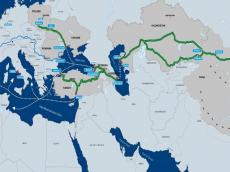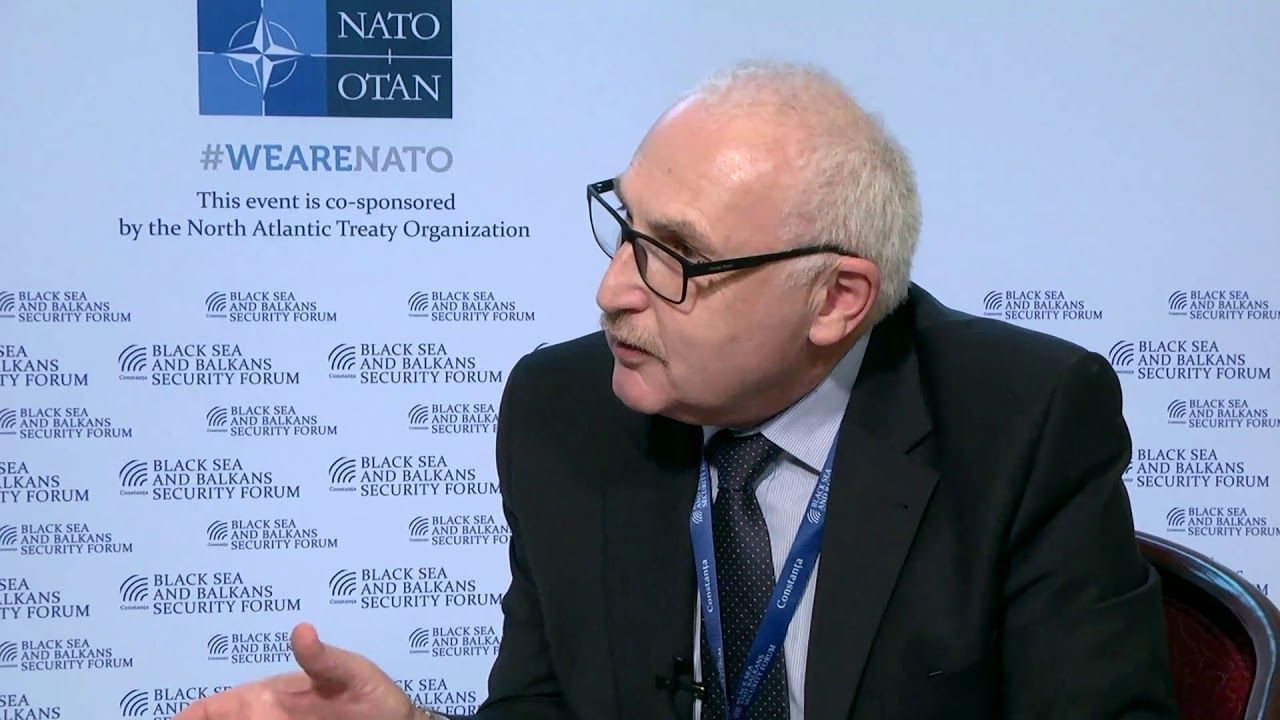|
|
TODAY.AZ / Business
Reviving silk road: Unlocking economic potential of Middle Corridor [COMMENTARY]
14 March 2024 [19:43] - TODAY.AZ

The Middle Corridor, also known as the "Middle Silk Road," is a strategic infrastructure initiative that aims to establish a multimodal transportation route connecting Europe and Asia through the Caucasus region. It is envisioned as a modern revival of the ancient Silk Road trade route, facilitating the movement of goods, energy, and people between Europe, the Caucasus, Central Asia, and beyond.
The Middle Corridor encompasses various transportation modes, including railways, roads, ports, and logistics centres, with the goal of enhancing connectivity and promoting economic development along its route. Key components of the Middle Corridor include the Baku-Tbilisi-Kars (BTK) railway, which connects Azerbaijan, Georgia, and Turkiye, providing a direct rail link between Europe and Asia bypassing Russia. Additionally, the Middle Corridor involves the development of maritime routes through the Caspian and Black Seas, as well as improvements to existing road networks.
This initiative is expected to boost trade, investment, and regional cooperation among participating countries, contributing to economic growth and development. It also holds strategic significance in diversifying transportation routes and reducing dependence on existing routes, thereby enhancing the resilience of global supply chains.
President Aliyev said the stakeholders need to combine efforts to make the Middle Corridor more commercially attractive.
“For that purpose, we already created a very efficient cooperation format between Azerbaijan, Georgia, Kazakhstan, and Türkiye. I think that if other countries in Central Asia, particularly Uzbekistan, would consider joining the format, it would be better for all of us. This really is a new map—a new transportation map of Eurasia with great potential.”
Here poses several questions: How do infrastructure investments along the Middle Corridor contribute to regional economic development? In terms of cost-effectiveness, how competitive is the Middle Corridor when compared to maritime routes for international trade? What economic challenges or barriers need to be addressed for the Middle Corridor to reach its full potential?
Muram Margvelashvili, Associate Professor of Illia University and Energy Director of "World Experience for Georgia, told Azernews that there are several direct and indirect ways for the Middle Corridor to contribute to regional economic development.

“First of all, the infrastructure investments and service infrastructure along the route create the economic activity that contributes to the economic growth of countries. The political stability, common standards, unified tariffs, and cooperation between countries that are a necessity for a successful Middle Corridor bring additional benefits to the business environment. Third, easy import and export routes create a supportive ecosystem for goods produced in the region. Politicians should keep in mind a bigger picture where the Middle Corridor is not only a transit route but also serves as the means for increasing the overall importance and economic potential of the region.”
According to him, the middle corridor is getting more competitive in the current volatile environment.
“The aggression of Russia in Ukraine, instability in the Red Sea created by Houthi attacks have significantly increased freight prices and hampered the delivery of goods to the EU. This makes the Middle Corridor even more competitive economically and adds a strong security of supply dimension to its operation.”
“There are many challenges and barriers that need to be addressed for the success of the Middle Corridor. Political stability and cooperation are a must. On the economic side, I would name infrastructure development as the primary task since efficient railways, roads, ports, and shipping capacities are crucial for seamless transit of goods. I could name the upgrade of the Baku-Tbilisi-Kars railway as one example of the needed interventions. Tariff harmonisation and a unified system of procedures and standards would be important regulatory contributions to economic success. Other factors include the efficiency and interoperability of logistics systems with the high level of digitalization,” Margvelashvili concluded.
URL: http://www.today.az/news/business/246014.html
 Print version
Print version
Connect with us. Get latest news and updates.
See Also
- 31 December 2025 [15:38]
Azercell introduces an enhanced “Wheel of Gifts” - 31 December 2025 [11:49]
State-funded places dominate vocational education admissions - 30 December 2025 [18:31]
bp publishes draft environmental impact assessment for ADUA seismic survey - 29 December 2025 [14:03]
SOCAR reps participate in strategic knowledge exchange program with Germany’s Uniper - 29 December 2025 [08:30]
Capacity building in assistive technology supports inclusive health [INTERVIEW] - 28 December 2025 [14:31]
Azerbaijan sees weekly jump in gold prices - 28 December 2025 [13:28]
Weekly review of Azerbaijani oil prices - 28 December 2025 [10:20]
Total of 1,218 individuals involved in employment measures for social adaptation - 27 December 2025 [14:46]
Azerbaijan allocates 9 mln manats for free legal aid next year - 27 December 2025 [11:55]
SOCAR advances redevelopment project for Bahar and Gum-Deniz fields
Most Popular
 The inconvenient truth: who actually owns the road through Meghri
The inconvenient truth: who actually owns the road through Meghri
 Jubilee event marking 75th anniversary of Professor Ibadulla Aghayev held in Baku
Jubilee event marking 75th anniversary of Professor Ibadulla Aghayev held in Baku
 Kevin Durant scores 30 points to lead Rockets to dominant win over Cavaliers
Kevin Durant scores 30 points to lead Rockets to dominant win over Cavaliers
 Capacity building in assistive technology supports inclusive health [INTERVIEW]
Capacity building in assistive technology supports inclusive health [INTERVIEW]
 Test of time: Karabakh showed who came to create
Test of time: Karabakh showed who came to create
 World Azerbaijanis Solidarity Day celebrated in Tashkent
World Azerbaijanis Solidarity Day celebrated in Tashkent
 Russian Sputnik releases new year video depicting Putin gifting world leaders
Russian Sputnik releases new year video depicting Putin gifting world leaders
